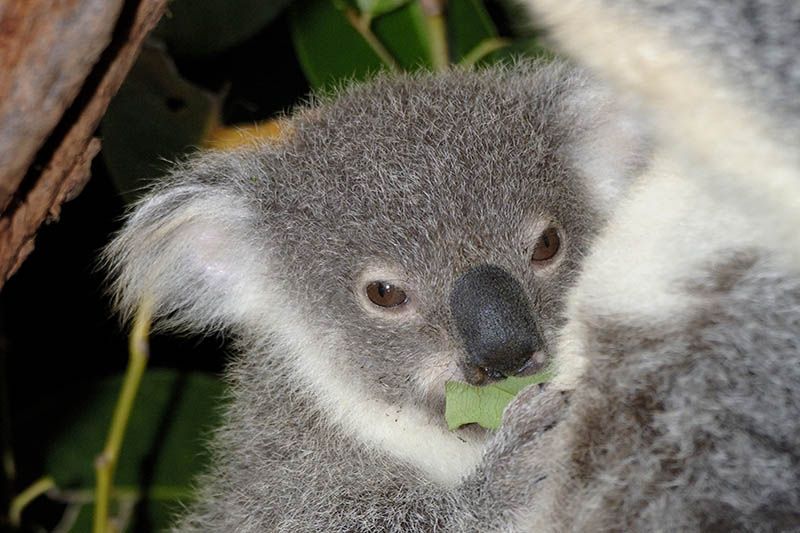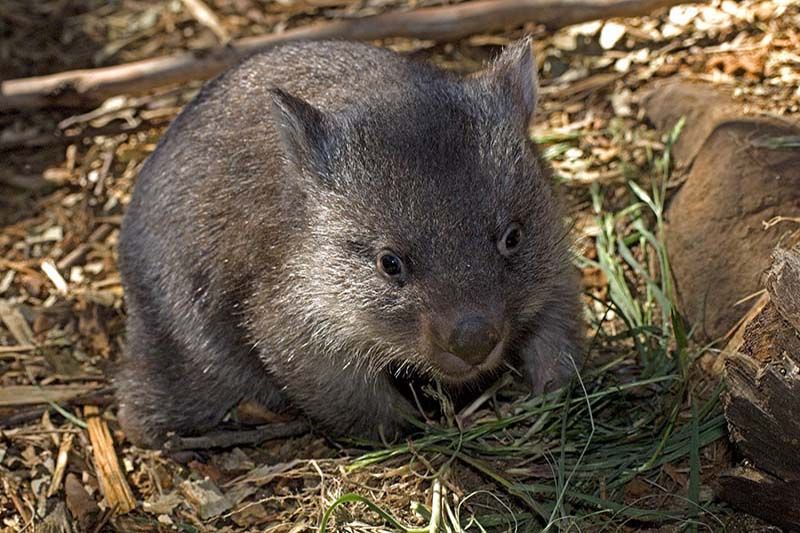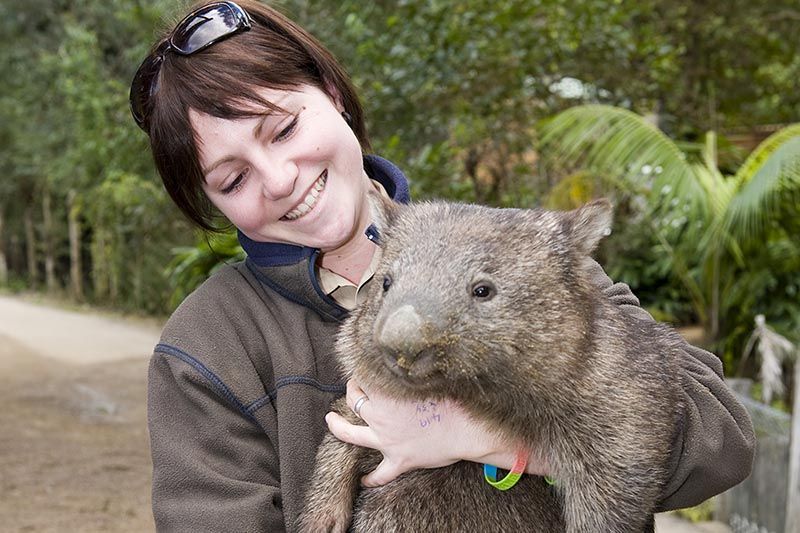
In Victoria’s devastating bushfires of early 2009, one single image touched people around the world: Sam the koala getting a drink of water from a Country Fire Authority volunteer. Yet hundreds of koalas and indeed hundreds of thousands of native animals around Australia are injured and killed every year on our roads. As travellers roaming this amazing country, we can all do a number of things to reduce our contribution to this unfortunate state of affairs.
[If you like this article, Like the Go RV Facebook page!]
REDUCE ROADKILL
The first goal should be to reduce roadkill. This is good for the animals, and it is good for our vehicles and caravans. Michael Pyne, a veterinarian working with about 5000 animals brought in every year to the Currumbin Wildlife Sanctuary on the Gold Coast, offers simple and easy-to-follow advice. Avoid driving at dawn and at dusk, and if you simply must get that early start, reduce your speed as much as possible. Heed all wildlife caution signs; they are there for a reason. Steve and I, on our endless rounds around Australia, avoid driving between dusk and dawn at all costs, but if we have to, we drive slowly and we both continually scan both sides of the road, using our horn liberally if we need to.
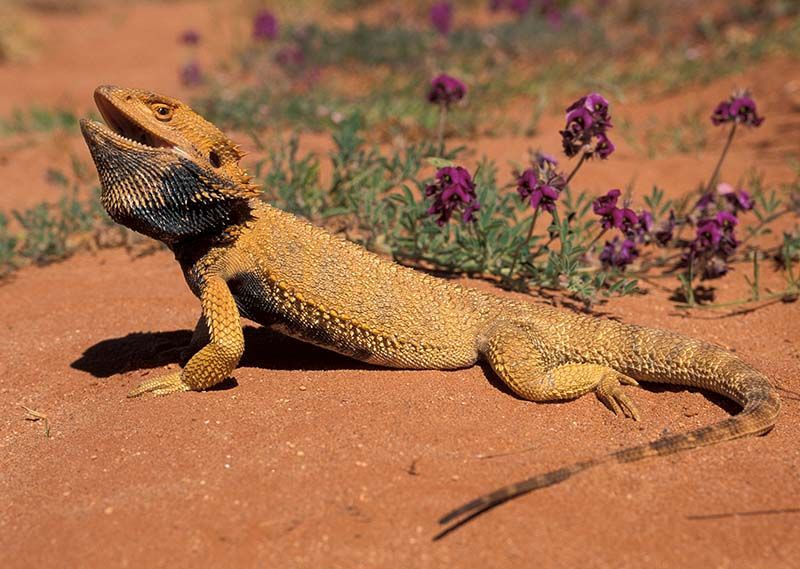
We also watch for owls attracted to insects that have been drawn to the open road by our driving lights. During daylight hours, when lizards enjoy a bit of treacherous sunbathing on the bitumen, we both watch out for them too and do whatever we can to avoid hitting them short of causing an accident; the same applies for birds.
ENCOUNTERING ROADKILL
As every RVer knows, it is impossible to travel without encountering roadkill. Along some sections of the Stuart Highway and the Barkly Highway, it’s like death row. While it is often not safe to do so, if you do find a dead animal and there is a safe place to pull over, remove the carcass since it will only attract scavengers such as wedge-tailed eagles (and Tasmanian devils in Tassie) that may in turn be hit. Check the pouches of marsupials for joeys. If you do hit an animal, pull over only if it is safe and approach it cautiously as it will be frightened and may bite, scratch or kick. Take note of your exact location and contact a wildlife rescue service if possible, or if need be, rescue the animal as best you can. Please don’t leave an injured animal to suffer a slow, painful death without contacting the authorities so that they can rescue it or put it down quickly.
ANIMAL RESCUE
To help us rescue animals, we travel with two pairs of extremely heavy gloves (the sort used by firefighters when clearing debris). We have several sizes of folding cardboard boxes, the sort found at Australia Post stores are perfect. We have old towels, tea towels, pillowcases, woollen or thermal hats or socks, a hot water bottle and iodine.
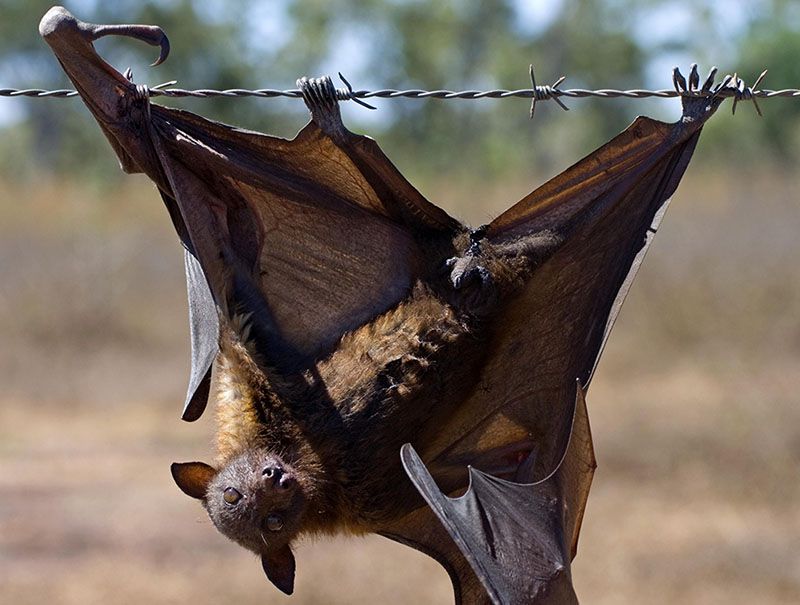
Over our many years of travel, we have rescued fruit bats impaled on barbed wire fences, green tree frogs lingering in busy parking lots, baby possums wandering lost in caravan parks, echidnas and numerous lizards attempting to cross dangerous roads, and even goliath stick insects escaping brush fires.
We once treated a pet brolga with a broken leg using a tongue depressor and a bit of compression bandage to make a temporary splint until a vet, 280km away, could be contacted. We have removed numerous dead kangaroos from the road, always checking the pouch for babies, along with other marsupials and dead birds. We have found horribly injured kangaroos left behind by drivers and waited by their side until we could contact someone to euthanize the poor creature.
For us, encountering wildlife is our greatest joy in travelling. The least that we can do is try to help these wonderful creatures in any way we can, any time we can. We thank you for taking care of them too!
EXPERT ADVICE
The following tips are from experts on assisting injured wildlife, with particular thanks to Kanyana Wildlife in Western Australia…
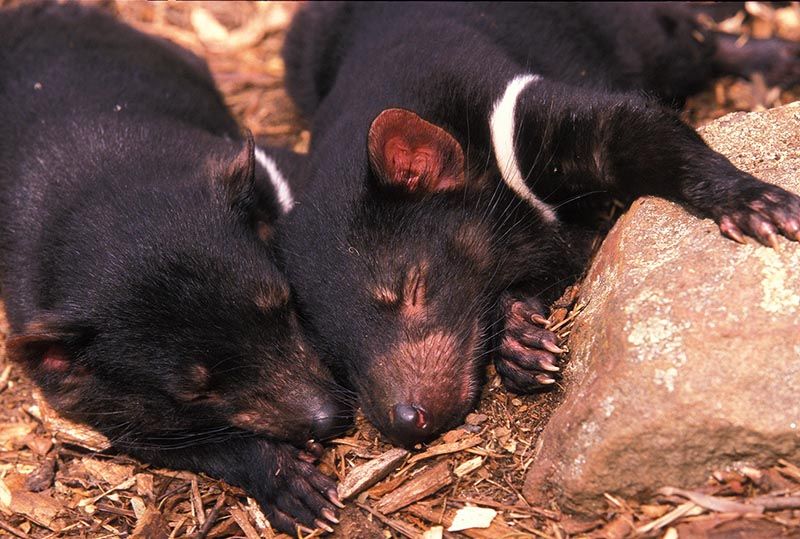
- First, make sure the animal actually needs to be rescued. Sometimes it just needs assistance crossing the road in the same direction it was heading; this is particularly true with turtles and echidnas.
- Place the animal in a similar size box (not a cage) to avoid further injury. Line the bottom with a thick, tight-woven cloth. Ensure that the container is well fastened. Keep the box in your vehicle, not in the boot where it might escape.
- Note the exact location where you find the animal so it can (if possible) be returned to its own territory.
- Keep it in a warm place out of draughts.
- Keep it as quiet as possible and away from loud noises; this helps to reduce stress.
- Do not feed the animal; many marsupials cannot tolerate cow’s milk and this will only make matters worse. Water may be offered but do not force it on an animal and do not place water in a box with an animal.
- Do not pull a baby marsupial off a teat in a pouch. It is better to transport the dead mother with the baby on the teat, or cut the teat off and leave it in the baby’s mouth.
- Get the animal to a vet or a wildlife rehabilitator as soon as possible. Delays can be fatal. It is against the law to keep native animals without a licence. If possible, deliver the animal to the carer: they have enough to do without the added burden of driving to you to pick up the injured animal.
ECHIDNAS
- Handle with heavy gloves, picking the injured echidna up carefully with two hands grasped at either side of the body (not by the legs). Transport in a secure box (plastic, not cardboard) that the animal cannot possibly escape from.
- Check the pouch of dead echidnas for puggles. Either transport the body of the mother with the puggles still in the pouch, or if the puggles are removed place them in a pillowcase.
- Echidnas should not be kept warm due to their high sensitivity to heat.
BIRDS
- Wear heavy gloves and try to grasp the bird around the middle with its wings tucked into its body.
- Place in a box as close to its size as possible and lined with old tea towels (without loose threads that the bird can snag its claws on).
- Make a note of exactly where the bird was found so that it can be returned to its territory after recovery.
- Baby birds and fledglings should only be rescued if you are positive the parent will not return to feed them, even if they have fallen from a nest. Place them in a small container and keep them warm.
BATS AND FLYING FOXES
- These should only be handled if you are positive you can do so without incurring a bite or scratch; in very rare cases, bats may carry a virus that is lethal to humans.
LIZARDS AND REPTILES
- Wear heavy gloves and pick up firmly just at the back of the neck; do not pick a lizard up by the tail. Place in a small box and keep warm and away from flies. Do not attempt to rescue a snake unless you are positive it is not venomous and you know how to handle it.
TURTLES
- Make sure the turtle actually needs to be rescued; wear heavy gloves and grasp firmly on both sides of the shell. Place in a suitable box.
POSSUMS
- For adults, place a towel over the injured animal to calm it and pick it up by the base of the tail and scruff of the neck. Place in a pillowcase and tie closed.
- Check the pouch of dead possums for babies. If a baby is on the teat, transport it and the dead mother. If it can be removed from the pouch, do so carefully and place it in a wool sock or hat. Keep warm either directly against your own body or by using a warm hot water bottle; external warmth is required as the baby will not warm up on its own.
- Make a note of the exact location where the possum was found as they are highly territorial.
BANDICOOTS
- Same procedure as for possums but be sure not to pick it up by its tail.
KOALAS AND WOMBATS
- Approach with care and try to place a box or basket over the injured animal. Ideally, phone a rescuer/carer to come and get the koala or wombat. If you have to rescue it yourself, cover it gently with a blanket or towel to calm it before you pick it up with caution. Place in a box or pillowcase from which it cannot escape.
- If there is a baby in the pouch, transport it and the dead or injured mother to a carer. If it can be removed from the pouch without pulling it off a teat, wrap it in a wool jumper and keep warm close to your skin.
KANGAROOS
- Stop in a safe place.
- Approach the animal with caution as kangaroos can and will use their powerful back legs to deliver a dangerous kick, even when severely injured.
- Check for a pouch. A bulge or movement may indicate live young. For smaller marsupials, leave the joey in the pouch and transport the dead or injured mother to a vet or wildlife rehabilitator. For larger species, gently remove the joey; if necessary, cut the pouch open to do so. If the joey is fastened to a teat, cut the teat off as far down as possible and leave it in the joey’s mouth. An elongated teat indicates that a joey was present, so a search of the area is worthwhile.
- Kangaroos with leg fractures cannot be saved, they should be humanely euthanized as soon as possible, preferably by shooting; assistance with this may be received from nearby farmers, police, rangers or by phoning a wildlife care line.
Thank you for caring about Australia’s unique and very special wildlife.
Pics: Steven David Miller / Natural Wanders
www.wires.org.au/rescue/rescue-app (download WIRES Rescue App).
www.kanyanawildlife.org.au (download the ‘Glovebox Guide’).
www.tasfauna.org (download the wildlife first aid manual).
Most vets, wildlife parks and all RSPCA centres will treat injured wildlife for free and then place them with a carer.
ShuRoo is a unit fitted to the front of your vehicle that emits a high frequency sound 400m ahead and 50m to the side, interpreted by kangaroos and other animals as a danger signal, giving them time to get off the road. Visit www.shuroo.com for more information.
Most of these wildlife rescue telephone numbers can be called 24/7. If possible, try to deliver the injured animal to the carer (we always leave a donation)…
Tasmania
Statewide: Bonorong Wildlife Sanctuary, www.bonorong.com.au, (03) 6268 1184.
Victoria
Statewide: Wildlife Victoria, www.wildlifevictoria.org.au, 1300 094 535.
Statewide: Wildlife Rescue Emergency Service, www.wres.org.au, 0427 301 401.
New South Wales
Statewide: WIRES, www.wires.org.au, 1300 094 737.
Statewide: Australian Fauna, www.fauna.org.au
ACT
ACT Wildlife: For injured kangaroos: www.actwildlife.net, 13 22 81; for other injured wildlife: 0432 300 033 (24 hours).
Wildcare Queanbeyan: (02) 6299 1966.
Wildlife Carers Group: 0406 056 099.
RSPCA Wildlife: (02) 6287 8100.
Queensland
Statewide: Wildcare Qld, (07) 5527 2444.
Statewide: RSPCA Queensland, www.rspcaqld.org.au, 1300 264 625.
Statewide: Wildlife Queensland, www.wildlife.org.au
South Australia
Statewide: SA Fauna Rescue, www.faunarescue.org.au, (08) 8289 0896. For koalas: (08) 7226 0017; for bats and flying fox: 0474 204 617.
Northern Territory
Statewide: Wildcare, www.wildcarent.org.au, (08) 8988 6121 or 0408 885 341.
Western Australia
Statewide: Wildcare Helpline, (08) 9474 9055.


